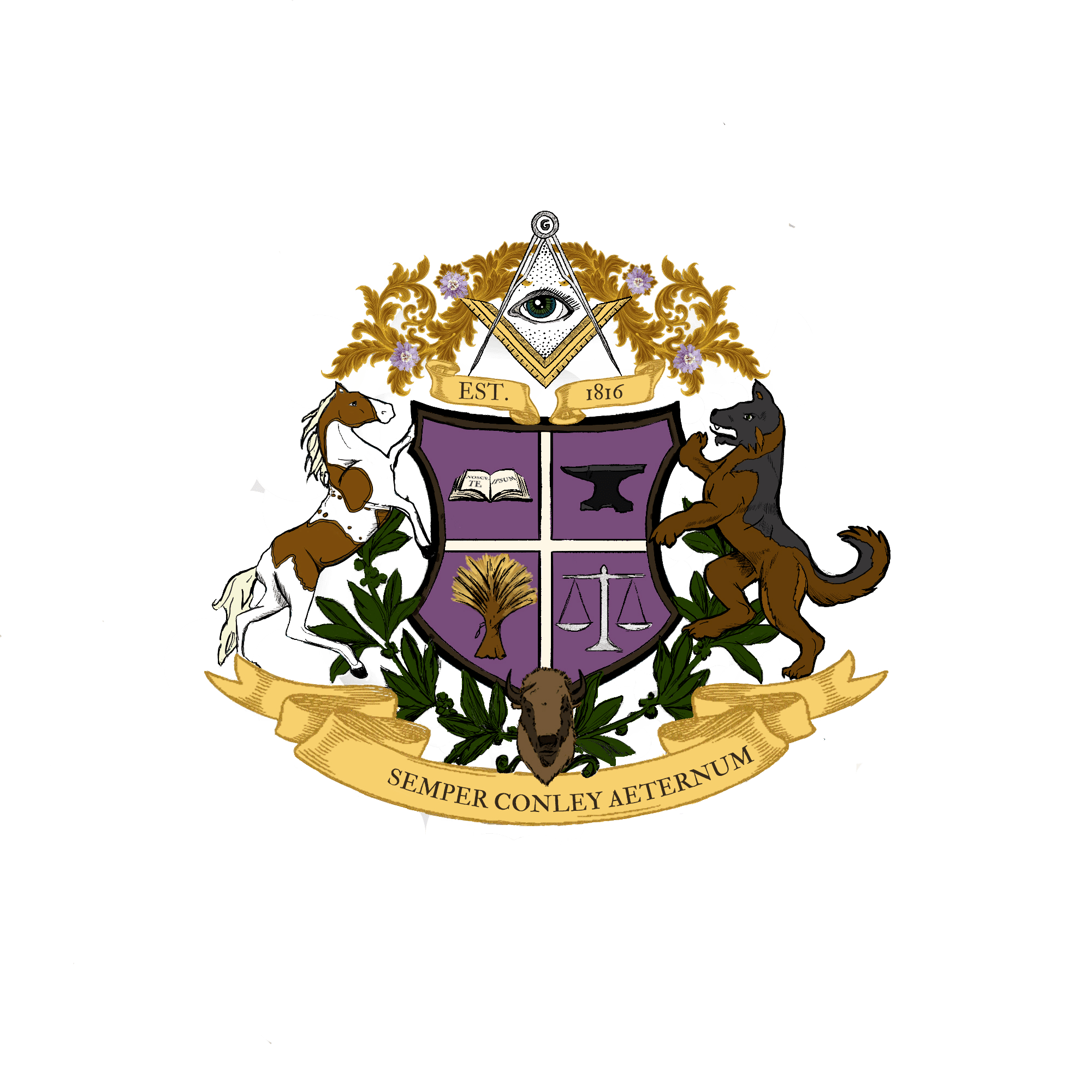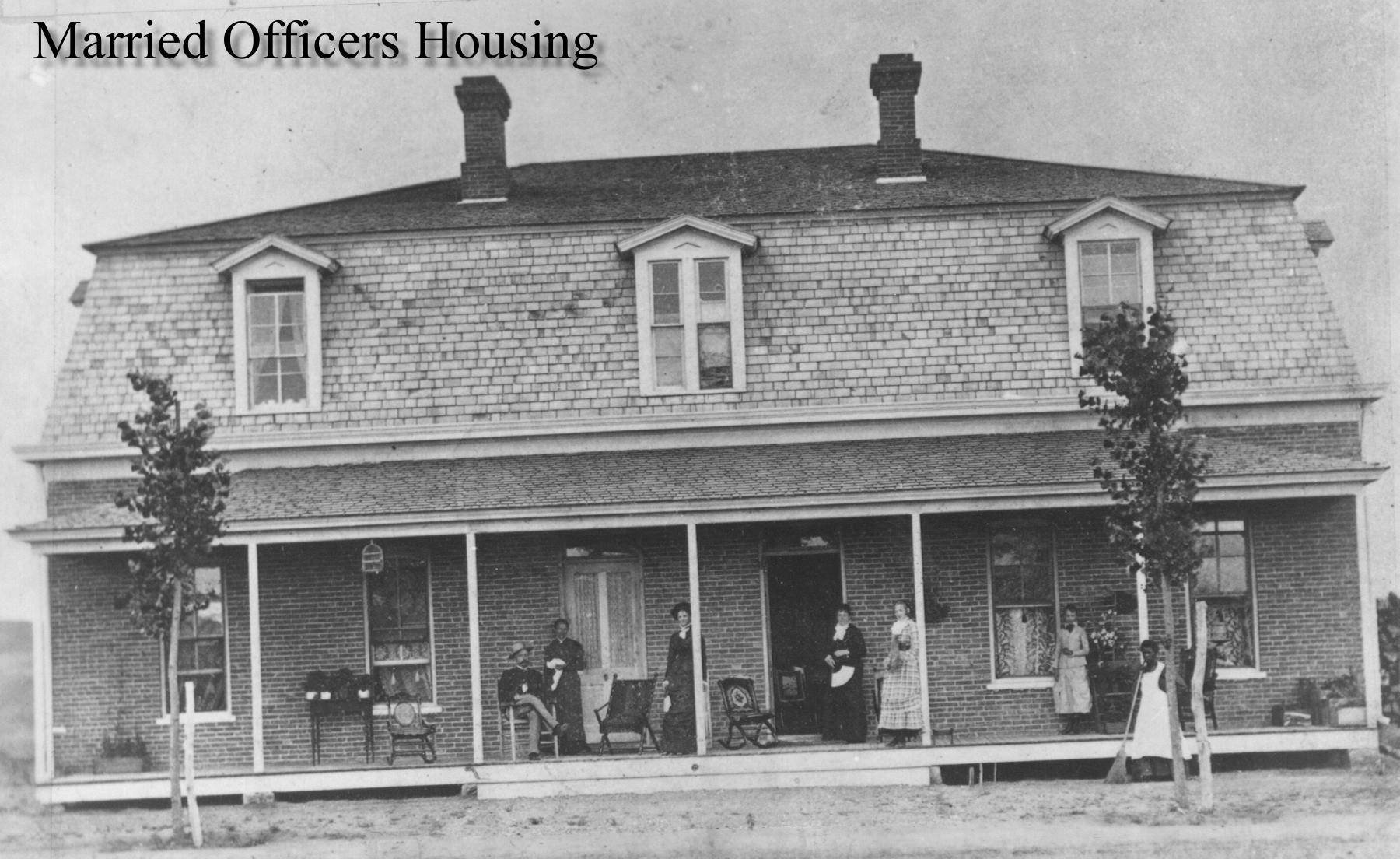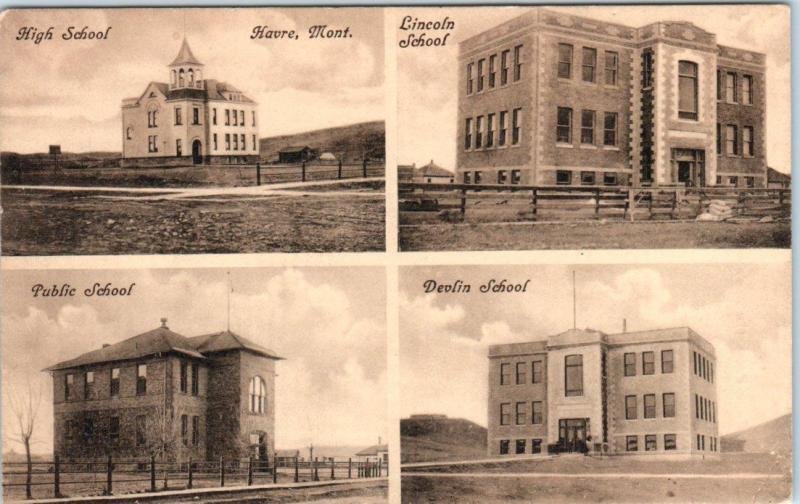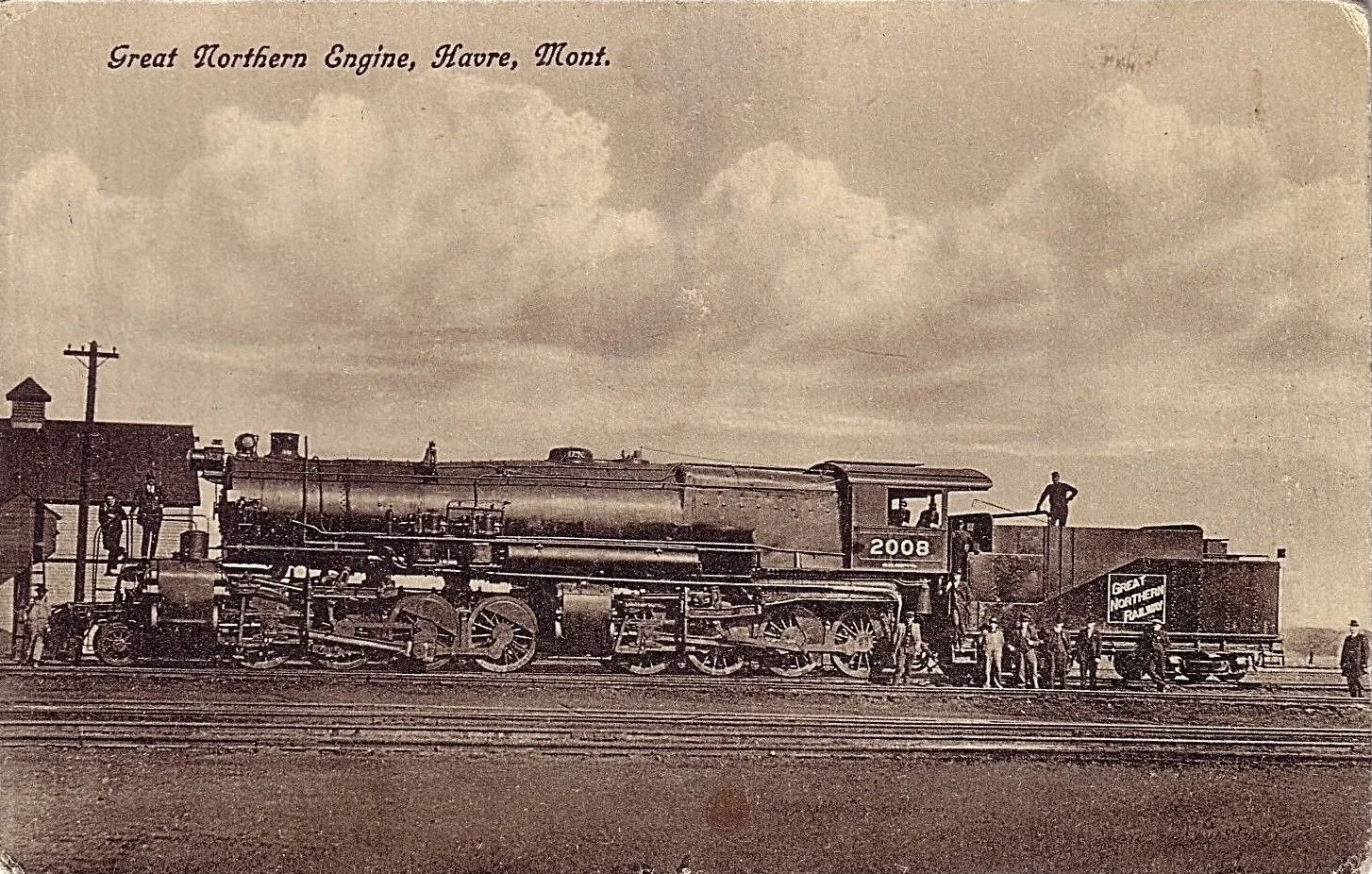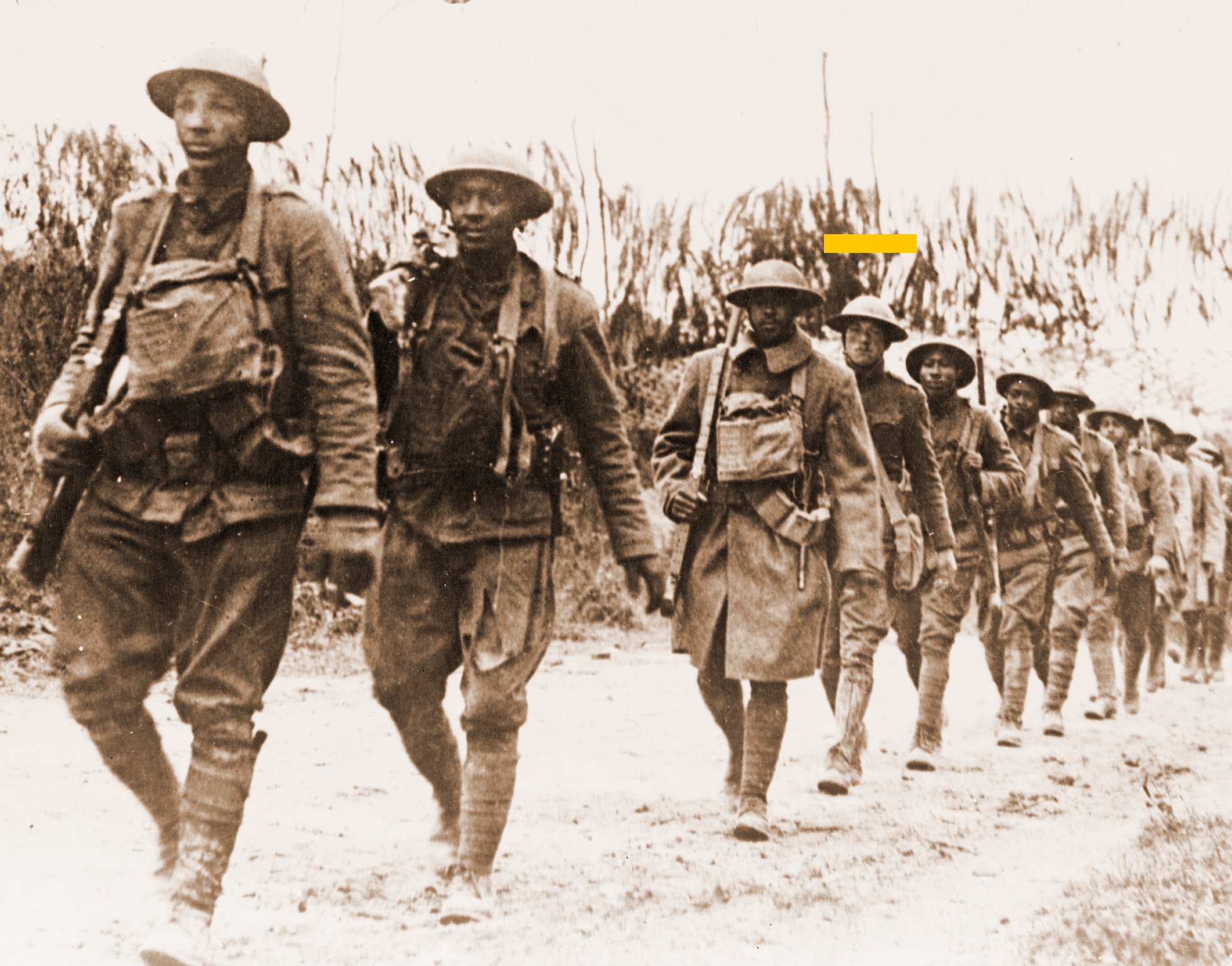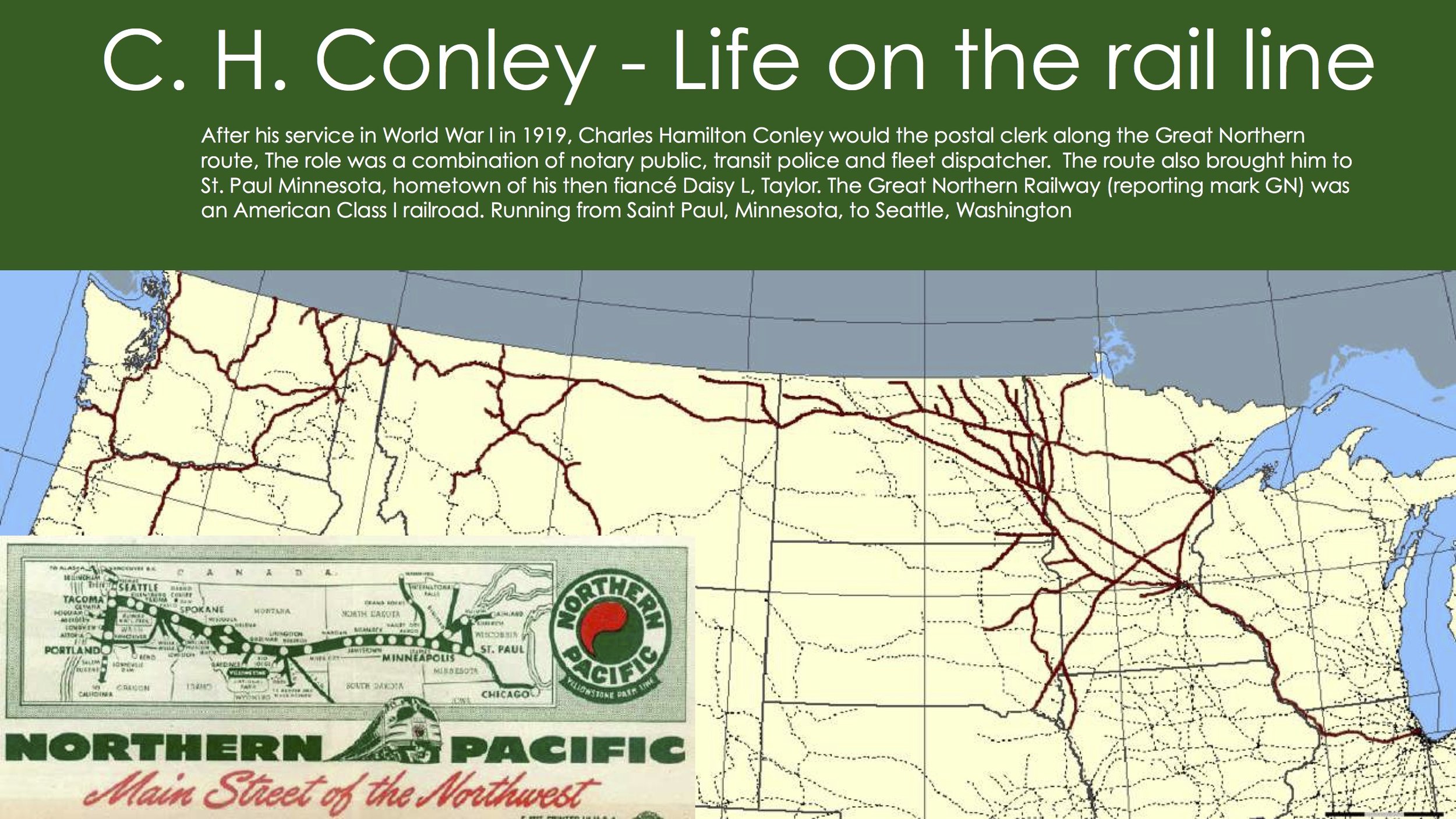CHARLES HAMILTON CONLEY (1890-1967)
WHO ARE WE, AFTER COLOR? THE CHALLENGE OF SELF-IDENTITY IN THE WILD WEST.
In May 2023, the Huntsville-Madison County Library hosted a presentation on the role of ethnicity in the life and career of 2nd Lieutenant Charles Hamilton Conley. The presentation was produced by Conley Family members Roger Conley Wood, Diane Gregg Morin, and Tommie Pruitt, with additional support from other family members Michael Proulx and the late Juliette Rodgers Thornton. The efforts of the aforementioned Juliette helped make Charles Conley’s childhood home a historical site.
The Smithsonian Institute was the sponsor of the presentation, as a part of their programming on Unconscious Bias. The Conley Family Compound is registered as historical site Smithsonian Number: 24HL1626.
SUMMARY
Charles was a World War 1 veteran, Federal Marshal, Post Master, and leading citizen of Great Falls, Montana. The son of famed Quartermaster Sergeant Paschal Conley Jr., Charles rose to 2nd Lt. Company 'K' 307th Infantry World War 1. As such, he was part of the historic father-son duo reporting to military icon General John K. Pershing, 6-star General, Commander of the Armies of the U.S.
When the story of the Buffalo Soldiers is told today, Charles and many other Blacks of ambiguous physical appearance are frequently overlooked. Yet, from 1865 and the end of the Civil War until the start of World War II in 1940, they were celebrated. Why did this happen?
In America there have always been disparities between a person’s chosen self-identity, and the stereotype of that ethnicity. While most Buffalo Soldiers were more African in appearance, many had a more Middle Eastern or even European appearance. In the Mountain States specifically, society treated Charles and many others like him, with ambivalence. They navigated the unconscious bias of early America with dignity and honor, carving out a life in the margins of bias.
Starting with his birth at Fort Bayard in New Mexico, Charles was alternately categorized as Black, Caucasian, Colored, Mexican, Other, and White. This was his uniquely American experience, and a matter of any given record keeper’s education, exposure, and discretion. In his military career his Black American ethnicity, caucasian appearance, and his military uniform were the key to his personal safety. While traveling across the Upper Midwest on the Northern Pacific Railroad, from Oregon to Idaho, through North Dakota, and on to Minnesota, he was often treated as a white man. This undoubtedly helped him execute his duties as a military guard and Federal Marshall protecting gold, silver, gems, currency, bank notes, and transporting dangerous outlaws who were arrested in the Wild West.
ORIGINS OF CHARLES CONLEY
1800-1845 James & Jane CONLEY
Charles Hamilton Conley was the great-grandson of James Conley, equerry and head groom and stable master of the Green Bottom resort. Charles’ grandfather, Paschal Conley Sr. was one of James’ 10 children, who all learned artisan vocational skills at the famed sporting center. Paschal’s younger brother Hamilton was the gardener and lumber yard operator, for whom Charles Hamilton Conley was named.
Paschal Sr. managed the livery operation and served as an ‘avener’ for the resort. The owners of many Southern equestrian sporting centers wanted their operations managed in the tradition of European nobles. This meant an avener reported to the stable master with complete responsibility for the horses, including walking and training schedules, feeds, and veterinary care.
After the death of Green Bottom Inn founder, John Oldham Connally in 1845, the hotel closed and the equestrian center fell into disrepair. The Conley siblings took their various trade skills and offered them throughout the Tennessee Valley as the nation expanded West.
1845-1890 Paschal & Mary CONLEY
Paschal Conley Sr. & Mary Steiger Conley, parents of Paschal Jr.
Paschal Conley Sr. quietly owned a livery stable in downtown Huntsville, and many other businesses with his brothers. Downtown, he shared a building with his business partner Levi Scruggs, a popular Colored barber to the wealthy whites in town.
Paschal Conley Sr. as a Livery & Stable Operator. He was a grandee of the Black community of pre-Civil War Huntsville.
1890-1900 EARLY CHILDHOOD IN THE WEST
The Parents of Charles H. Conley were his father, Sgt. Paschal Conley Jr. and Mary Jones Conley. His father Sgt. Paschal was the son of Paschal Sr. and a popular Buffalo Solider with the 24th Calvary at the time of Charles’ birth.
Paschal Conley Jr., father of Charles H Conley. He was born in Alabama in 1858, joined the Army in 1878 as a private in the 24th infantry company ‘H’ of the famed Buffalo Soldiers. He worked mainly as a regimental clerk at Fort Supply in modern day Oklahoma until 1884.
Mary Jones Conley, mother of Charles H. Conley. Paschal married Miss Mary Jones on April 20th 1884. After their marriage, Paschal re-enlisted and with every station, Mary followed him.
Charles Hamilton Conley was born in the ‘Wild West’ at Fort Bayard’s hospital in 1890. He was named for his grandfather’s quiet, gentle, brother Hamilton, who was a gardener trained at Green Bottom.
Fort Bayard was located in what is today the state of New Mexico.
Fort Bayard, New Mexico. Birthplace of Charles Hamilton Conley in 1890. In a coincidence that would greatly benefit Charles later on, Fort Bayard is where General John ‘Blackjack’ Pershing began his career in 1887 when he was assigned to Troop L of the 6th U.S. Cavalry in the New Mexico Territory.
“We can see this correlation in comparing his station details and the births of his children. Mattie was born in 1887 in ‘Indian Territory’, Charles was born at Fort Bayard, New Mexico in 1891, Edward was born in North Dakota Territory in 1892, and finally Paschal Jr. was born in Montana 1894.” (extracted from the Smithsonian Historical Properties description.)
Beginning in 1888, the 24th and 25th Infantries and the 9th and 10th Cavalries would be stationed throughout Montana at Fort Missoula, Fort Keogh, and Fort Assiniboine where the legendary General John “Black Jack” Pershing (1860-1948) would have one of his first commands leading Buffalo Soldiers. This is how the Paschal Conley branch came to settle in Montana.
1900-1910 THE HAVRE, MONTANA YEARS
The Conley Family settled in Montana, when Paschal Sr. was assigned to Fort Assinniboine as part of the famed 10th Calvary, Company H. The Fort was a stately, impressive complex for the era, adjacent to the Bear Paw Mountains.
Charles lived on the military compound with his older sister Mattie, and brothers Edward and Paschal III, while his father sailed to Cuba with John Pershing and future U.S. President Teddy Roosevelt 1898. They remained there in Havre, while Paschal fought in the Spanish- American War in Cuba from 1899 until 1902.
THE SPANISH WAR ENDS, AND NEW LIFE BEGINS
In November 1906, Sgt. Paschal Conley retired from the military, as a Quarter Master Sergeant in the 10th Cavalry. He became an icon of excellence recognized for his long years of services to rising star John J. Pershing, who by that time had appointed brigadier general. In retirement, Paschal Conley accumulated substantial real estate, and created his own version of the legendary Conley Compound. Paschal and his beloved wife Mary began taking part in the social life of the town. In 1907, Paschal became as the president of the Colored Co-operative League for the region. His wife Mary was elected the treasurer.
Charles H. Conley with his family on the 1910 Census, one year after his father’s retirement .
The Family bought property in town and established a self-sustaining family compound with a small farm. Paschal Conley was among the 10th Cavalry. His company H was stationed at the fort long enough for his family to establish themselves in the Havre area.
Clockwise, from Charles Hamilton Conley (gold halo): Mother Mary Jones Conley; sister Mattie Conley; brother Paschal III, and brother Edward. Father Paschal Conley Jr. was deployed in the Spanish-American conflict when this photo was taken.
The Conley children (Mattie, Charles, Edward, and Paschal III) all attended school in Havre. Beginning in his youth, Charles, his sister Mattie and brother Edward were cited as academic stars in the public schools of Montana. They were model students praised for their intellectual abilities and fine manners. Newspaper articles tracked the academic performance of the Conley children, and held them up as model minorities. (Reference: “Winners of Credit Marks”, Havre Herald. “Report of Schools for September”, Havre Herald. “The School Report for February”, Havre Herald.)
This postcard shows the neighborhood where the Conley compound was located in central Havre. Charles lived at the end of this block with his parents and siblings. There were four structures in the compound, which was built between 1905 and 1914. His father Lt. Paschal Conley was a leading citizen of Havre, and owned property throughout northern Montana along the board of Canada.
1910-1917 LIFE IN GREAT FALLS, MONTANA
The end of the Spanish-American War brought his father home, and Charles was eager to make his own way in the world.
At 18, Charles joined the postal service railroad operation in Montana. He became a notary and postal clerk on the trains running between Hill, Cascade and Custer Counties. By this time, his father was a legendary figure having served under General Pershing, who was in the news constantly with his military campaigns. This gave Charles high credibility on the wild frontier.
1917-1920 WORLD WAR 1 IN FRANCE
As the Europe erupted in conflict, Charles saw his opportunity to add his own chapter to the epic story of the Conley Family.
Charles Conley with the Colored Contingent in Cascade County, (Charles Conley used his house on the Conley Compound in Havre, Montana as his home address in Hill County. He worked in Cascade County, and trained as part of that contingent.
Charles H. Conley’s military registration card on June 4, 1917 in Havre, Montana. He was listed as ‘Negro’ race.
OFFICER APPOINTMENT. As was his father, Charles H. Conley was promoted to 2nd Lt. of the 370th infantry by General Jack Pershing. Unlike his father, 2nd Lt. Paschal, Charles was elevated immediately. The reason ? Sensitive to the atmosphere of institutionalized ethnic bias, General Pershing had Charles listed as ‘White’ then promoted him. Charles then arrived back in America as ‘Colored’ again.
Newspapers across Montana chronicled Charles. As the son of a famed Buffalo Soldier with ties to newly appointed General Pershing, his decision to follow his father’s path took on new meaning. Once the troops were prepared, Charles wrote back to Black Social Clubs across the state who cheered him on.
Like his father before him, Charles H. Conley helped shape the image of the Buffalo Soldiers officer corps as ‘Poet Warriors’ steeped in arts, culture and the humanities. His cultural refinement is evident as he followed a tradition begun by his father in insisting the troops read great literature and poetry, in addition to their fitness regimens. In World War I, Above, see the reference to poems written by Paul Laurence Dunbar.
Image of passenger manifest for Charles’ return to America as a war hero. Although he was not engaged in direct combat, Charles was part of historically significant supply chain and civil engineering effort.
Military historians generally agree, that The Great War was won through a triumph of logistics and supply chain management, in which Charles was deeply involved.
1920 - 1930 BACK TO MONTANA
The Great War defined men and women of Charles Conley’s generation. Charles returned to Montana with his own prestige beyond that which his now deceased father provided. His parents died in 1919, and Charles assumed leadership of his branch of the expanded Conley Family enterprise.
Charles was now 2nd Lt. Company 'K' 307th Infantry World War I, and celebrated throughout the state. The Conley Family, Charles’ hometown of Havre, and his new professional colleagues in Great Falls could not have been more proud.
The Brothers Conley, undated photo from WW 1, circa 1915. Charles Hamilton Conley (Standing on far Left) and Edward Conley (Sitting on Left). Both men were veterans of World War 1, and the sons of 2nd Lt. Paschal Conley Jr. Photo Credit: Anthony L. Powell, descendant of Buffalo Soldiers photographer First Sergeant Samuel N. Waller
Today, Charles is rarely mentioned in historical accounts that celebrate the valor and bravery of the Buffalo Soldiers in ‘The Great War’ aka World War I . Yet, he was constantly mentioned in newspapers of the era, and his presence was almost that of a celebrity in the Mountain Region.
As a soldier, Charles endured the public spotlight, as the son of a respected military man. From the moment Charles enlisted, to the moment he returned from France at the end of World War I, the press followed.
After the Great War, Charles enjoyed considerably greater celebrity. The finest Black American families in the Mountain States waited his marital decision. His comings and goings from St. Paul, Minnesota to Boise, Idaho, and Seattle, Washington were watched carefully. Eventually, he married Daisy Taylor, a woman from a Colored family of high social standing in Minnesota. Daisy became a poplar figure in Great Falls, Montana where they settled.
Charles Conley traveled the entire Northern Pacific rail network. He served in a role that combined Customs Officer, U.S. Marshall, Public Notary, and Postal Clerk. He was a faithful public servant, and well-respected in towns across the upper MidWest and Mountain States. He was a familiar face from Seattle to St. Paul.
1945-1965 A TIME OF CHANGE
At the end of World War 2, it appears that Conley began passing, and their are a variety of reasons why this may have occurred :
A NEW GENERATION TRANSFORMED MONTANA. The post-war era was wrought with unprecedented generational change in America, and specifically Montana. The Founding Families were dying off, and new arrivals redefined the cultural landscape. Those thousands of new arrivals saw him as white, and and there were simply too many of them for Charles to explain his personal identity.
THE LAST CONLEY IN MONTANA. He was the only Conley remaining in Montana by 1945. His mother and father had been dead for 25 years. His brother Edward had been in Southern California for a couple of decades. His older sister and her husband were living as white community in a quiet community in Seattle, Washington. His first cousins were in Vermont and Maine.
NO CHILDREN. Charles and his wife Daisy had no children.
PROFESSIONAL PROGRESS. As he aged, his hair turned white, and he looked increasing Northern European. In his role managing the post office in Great Falls, there was little incentive for him to explain that he was not related to the other people named Conley who migrated to Montana and surrounding states.
By 1950, Charles was 60 years old, and World War II had changed America in profound ways. The glory of the Spanish-American War and The Great War had faded, and the Wild West that Charles was born into was now a thing of the past.
Charles H. Conley and his wife Daisy Taylor Conley shown in 1950 Census. The changing mood of the nation, meant they were a ‘White’ couple in Great Falls, MT. They continue to generously support social clubs and arts organizations for Blacks in Montana.
In his 60’s with his prestige firmly in place, Charles Hamilton Conley settled in as an elder statesman in Great Falls, Montana commending respect and adoration throughout the state. He and his wife Daisy were generous with their support for social clubs, charities, and other organizations in Great Falls and other towns in the state.
By the time of his death in 1967, Charles Conley saw social norms were transformed. The small town boys who returned to America after having served overseas in World War II, gave way to their children, the Baby Boom Generation. A new spirit spread across the nation. TV, Rock ‘n Roll culture, renewed attention on Civil Rights, and many other introduced change.
The 50 years since Charles had arrived in Great Falls made him a witness to an exciting period in American History. 1915 to 1965 was the apex of the American Century, Charles H. Conley represented the themes of that period. His family quest for dignity in Havre, Montana was a classic American tale of heading West for a new beginning. His valor in World War 1 help shape the legend of the American Soldier. His choice to bring simplicity to his final years was also a reflection of how the Civil Rights Movement was understood in the rugged Rocky Mountain Region.
